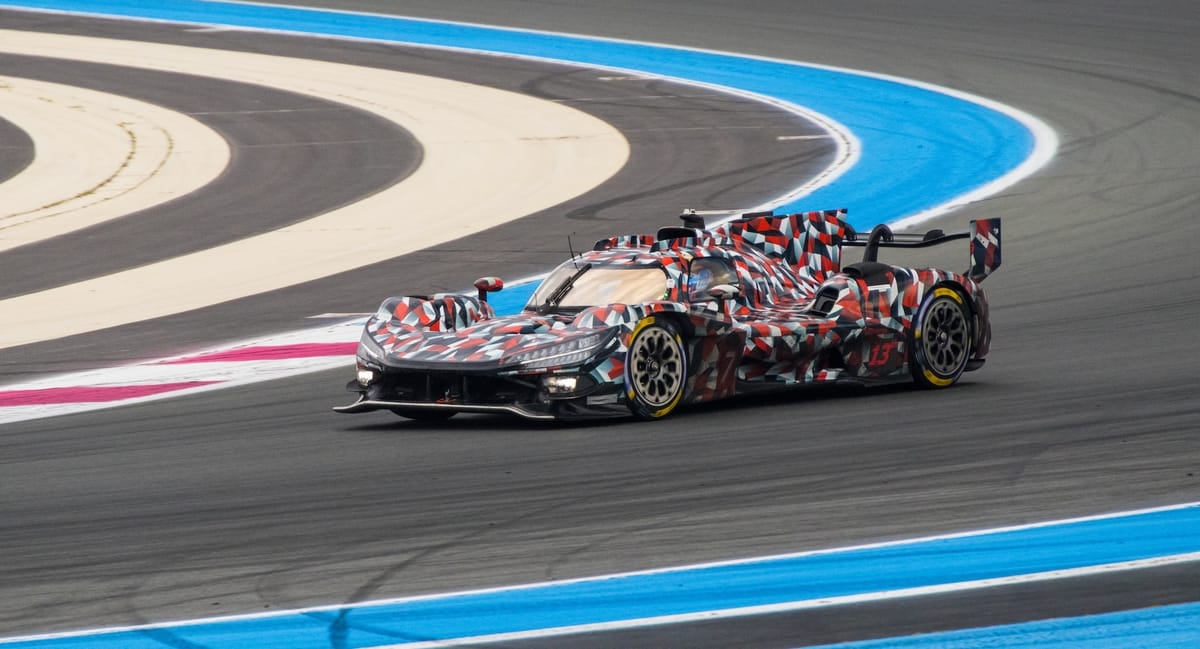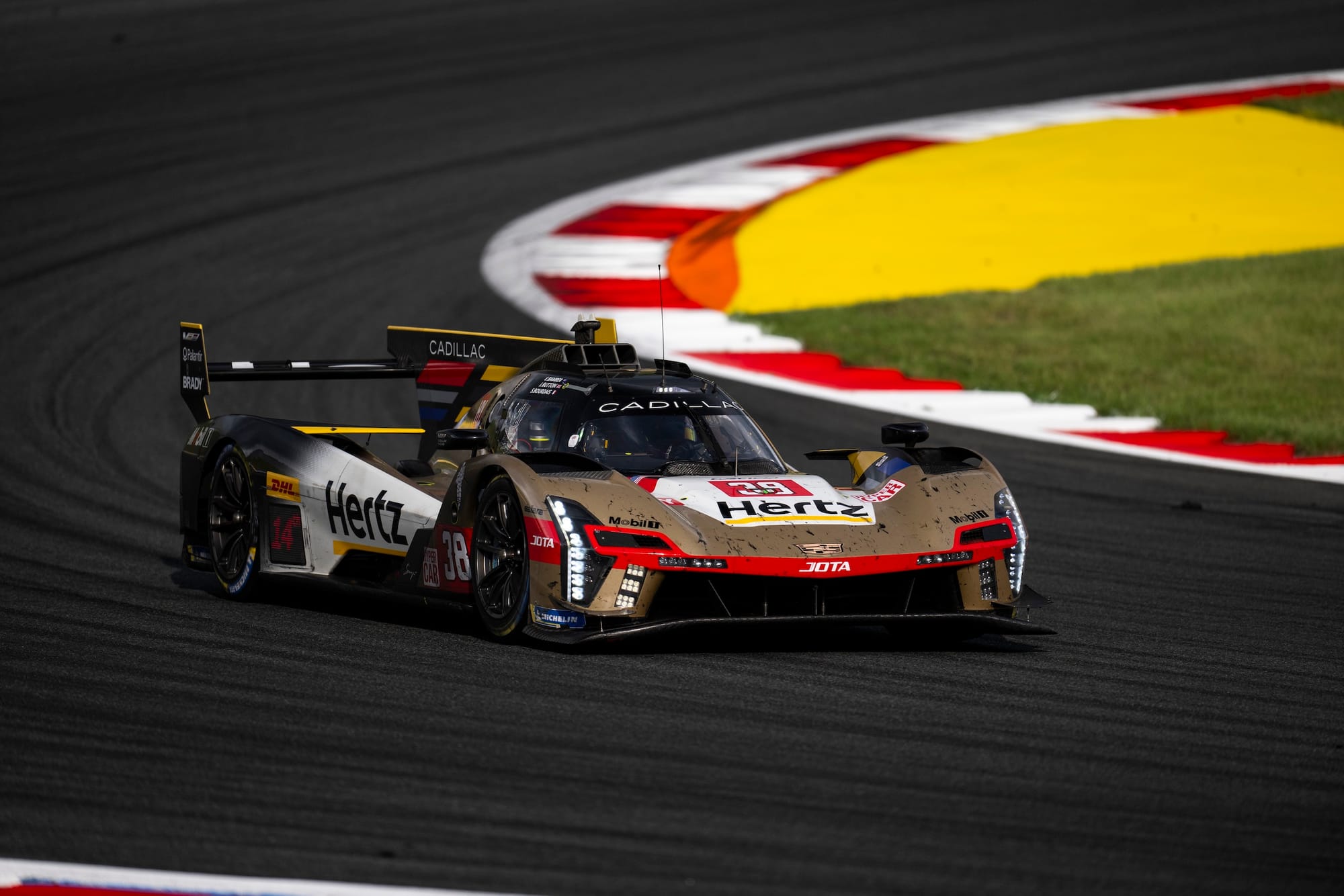The 2025 FIA World Endurance Championship will draw to a close at Bahrain next weekend, after eight thrilling races across the world.
The Balance of Performance figures, which set various variable factors for each car, have been released today with some big changes for some teams. Let's take a look.
Download The Racing Line on iOS today and get 70% off a year's subscription!
Weight
Porsche are now the heaviest car, on 1069kg, having had a 4kg increase since Fuji. Toyota, who were previously the joint-heaviest at the same figure, are now 7kg lighter at 1062kg. Ferrari, also previously the joint-heaviest, have also lost weight and now stand at 1064kg. Cadillac are 4kg heavier, splitting Toyota and Ferrari on 1063kg.
Alpine and BMW have each lost 2kg to weigh the same, 1054kg.
For the first time since Qatar in a regular, non-Le Mans round of WEC, Porsche are now not on baseline weight, having had an increase of 4kg, putting them on 1034kg. Aston Martin remain on 1030kg with the Valkyrie, the same since Le Mans.
Power (before 250kph)
With the lowest weights, Aston Martin and Peugeot are now also the most powerful cars. Peugeot has lost a since kW of power, at 519kW, while Aston Martin remains at 520kW, the maximum allowed by the regulations.
Fuji winners Alpine have lost 9kW, but Cadillac are the biggest losers, going from 510kW at Fuji to 486kW at Bahrain - a loss of 24kW, around 32 horsepower.
BMW lose a single kW to put them on 498kW. Porsche are another big loser, 9kW down on Fuji, at 481kW.
Toyota and Ferrari have both gained power. 6kW for Toyota, to 489kW, and 3kW for Ferrari, to 483kW.
Support Only Endurance's independent sportscar journalism today from £1/$1/€1 a month
Power (after 250kph)
As usual with the WEC BoP figures, the power post-250kph figures look vastly different to pre-250kph.
Toyota is by far the most powerful car after the 250kph threshold has been passed, at 519.81kW. Cadillac will also gain over 6% power after that threshold, and will be the second most powerful, on 516.13kW.
For the first time in a few races, Aston Martin will lose power after 250kph, going from 520kW to 511.16, both gaining a little compared to Fuji.
Ferrari and Porsche are both very similar on this metric – 506.18kW for Ferrari, 506.01kW for Porsche. BMW are slightly below on 503kW.
Peugeot's power gain post-250kph has been reduced, meaning they'll now have 489.94kW to use once that threshold has been passed. And Alpine will have slightly less, 488.92kW, a slight decrease compared to Fuji.
Energy per stint
Aston Martin still possess by far the most energy to use per stint, on 915MJ. This, though, has decreased by 4MJ compared to Fuji.
Toyota's energy per stint allowance has gone the other way, 4MJ up to 909MJ. Porsche will have 901kW to use, BMW 898MJ, Cadillac and Ferrari both on 893MJ with Ferrari's allowance unchanged since Fuji. Cadillac are the biggest losers here, losing 10MJ since the race in Japan.
Peugeot sit on 891MJ, while Alpine will lose 6MJ, to 887MJ.
Power-to-weight ratios
The easiest way to digest this is by looking at the power to weight ratios.
The immediate, noticeable effect here is the huge decrease for Cadillac. They've gone from a 0.482kW/kg at Fuji, to 0.457kW/kg at Bahrain. That's a 0.0025 loss. It's not the biggest this season – that goes to Ferrari's 0.049kW/kg loss from Le Mans to Interlagos, then Toyota's loss of 0.040kW/kg, also between those two races.
But it's still a big loss for Cadillac.
Porsche's power-to-weight ratio has, meanwhile, dropped to below Ferrari and Toyota's – the first time this has happened this season for a regular WEC race (they were below both in this metric for Le Mans).
Alpine's ratio has dropped 0.010kW/kg, while BMW's has stayed almost identical, just a 0.001kW/kg change downwards.
As Peugeot have gained a little bit of weight and a little bit of power, their ratio is also slightly below Aston Martin's maximum allowed, for the first time this season.
What does this all mean? History tells us that although Ferrari and Toyota have the amongst lowest power-to-weight ratios, they are both typically still right up there. Toyota's performance has declined a little this year – hence the updated GR010 coming next year – but they always tend to do well at Bahrain.

Ferrari, meanwhile, have been consistently strong this year, with Fuji a brief blip due to the 499P not suiting Fuji's somewhat-unique characteristics.
Porsche may struggle with the lowest power-to-weight in the field, as may Cadillac with that huge decrease. Alpine, too, may not be as strong as at Fuji.
Aston Martin have learnt a huge amount about the Valkyrie over the course of the year. With the power-to-weight remaining the same since Le Mans, but their understanding increasing hugely, they may be able to challenge for more points as their first season with the unique, non-hybrid Hypercar draws to a close.
See the full BoP table on the WEC website.
Feature image: DPPI / WEC
Download The Racing Line, your personalised motorsport calendar, on iOS today to get up to date session times and customisable notifications for over 150 different series, including single seaters, sportscars, rally, bikes, and much more.



